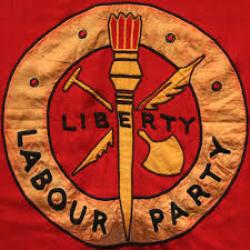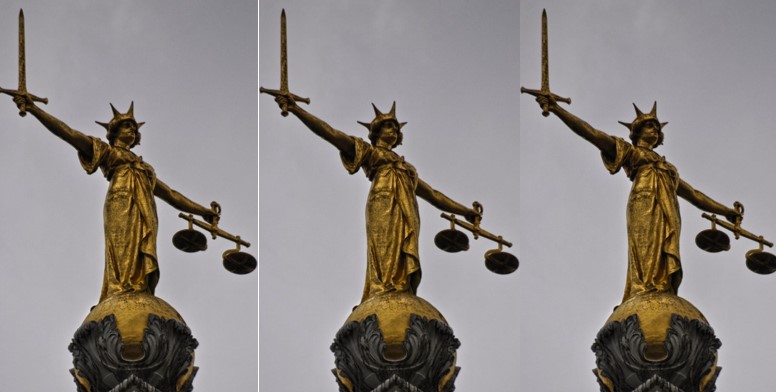By Alec Price
As Corbyn’s supporters now know from bitter experience, winning the leadership of the party is only the beginning of changing it. The Labour leadership duo of Keir Starmer and Angela Rayner were elected on a platform of policies that are far to the left of those of New Labour, with the added promises of party “unity” and electoral victory. But with significant sections of the membership demoralised or politically naïve, the Starmer leadership is now working towards a rapid reversal of the gains of the Corbyn era, with a new general secretary in post, a new shadow cabinet, and now the public sacking of the only token Corbyn supporter in the cabinet.
However, the right are still not completely confident of their ability to have their allies triumph in NEC elections, because these are decided by the members who are still overwhelmingly further to the left than the leaders. The right wing will avoid any open discussion on the politics, because their real intentions and aims will become apparent. The memory of Tony Blair enthusiast Liz Kendall’s 4.5% vote in the leadership election is a stark reminder of how much support such ideas hold in the party. Instead, those on a mission to make the Labour Party a safe space for capitalism are seeking bureaucratic fixes to consolidate their position.
Changes normally endorsed by Party conference
At a reportedly heated meeting of the Labour Party National Executive Committee (NEC), the Starmer/Rayner leadership supported a change to the system used to elect the nine positions on the committee from Constituency Labour Parties. The current rule book states that these seats must be elected by One Member One Vote (OMOV), and you can only change the rule book through a constitutional amendment passed at National labour Party conference – which is dominated by left wing CLP members and trade union delegations of various politics.
So the hands of the NEC being tied, they have changed the system of election of these nine places, without any recourse to an agreement at conference. Based on the current situation, Labour Party members would choose between the candidates for NEC and vote for up to nine candidates. Those with the nine highest votes would be elected, and if past performances and the current state of the membership, in all likelihood, nine left wingers would have swept the board – provided there was a single unified ticket of nine left candidates.
But now the right wing leadership has changed the way the votes are counted. Instead of the nine candidates with nine highest votes being elected, a system known as “single transferable vote (SVT)” was agreed by the NEC, by 19 votes to 12. This will only affect places for CLP voting as the votes for trade union representatives and others on the NEC are reported to be unchanged.
What was the argument about?
Whatever the merits or otherwise of a STV voting system, this is clearly a manoeuvre on the part of the right wing, hoping to wangle more of their supporters onto the NEC. They claim that the current “winner takes all approach” is undemocratic, but they would say that, given how many defeats they have had when Labour members cast their votes invariably for the left.
Contrary to the belief of some on the left, the majority of the Labour membership are still on the left, despite the election of Rayner/Starmer. The decision to change the way NEC votes are counted is an indication of this, because if the right wing were confident of having their supporters elected, they would have just kept the same system and won all nine seats. The change, which any reasonable observer would expect to have been agreed first by conference, shows that the right are nervous at the prospect of the members’ votes.
The left wing on the NEC, including the more left trade unions, have backed a legal challenge on the failure to take this rule change to conference. However, while socialists argue that we should use any tools we can, the law is generally serves best the established order, in this case ‘new’ New Labour rather than those fighting for change on the radical left of the party.
Refusing to back Open Selection
What is particularly galling is the sight of some union NEC members taking this legal route, when they failed to follow their own union policy by refusing to back Open Selection at the 2018 Labour conference. Instead they took pushed for and won minimal rule changes that resulted in zero change to the make-up of the parliamentary Labour Party, allowing some MPs to stay in place and wreck Labour’s election campaign.
A purely legalistic method of defending Corbyn’s legacy would be no match for campaign to mobilise the membership of the Party and the trade unions to fight industrially and politically on the key issues facing the class, and fighting to win the party back for socialist policies.
What does it mean for Labour members with votes to cast?
For party members voting for the NEC later this year, it means that rather than simply voting for up to nine candidates, members will have to rank up to nine candidates in order of preference. There then will follow a complicated process, with the candidates with fewest votes eliminated and with potentially many rounds of counting, until there are nine winners. Candidates will be required to hit a given quota of votes, and on passing this threshold they will be duly elected. All those candidates marked as a 1st preference will be counted first. If – and this is virtually certain – there aren’t nine candidates who hit the quota in the first round, then the second preference votes will be counted and added to the amount gained in the first round. This process continues until nine candidates pass the threshold.
If the left was united around a single ticket of nine candidates, previously election it would have won. But under the new system those people at the end of the list won’t have any votes counted at all in the early rounds of voting. What happens if a right winger passes the threshold before candidates ranked 7, 8 and 9 on the left slate, for example, have their votes counted?
Right wing are in a minority among members
Now it is clear for all to see that the change to the way votes are counted will lead to different results, and in a situation that sees the right wing are in a minority, yet not an insignificant one, the support they get could well take a few of those nine NEC seats. Or, to put it more correctly, it would stop the left from winning all nine CLP seats, mean that Starmer and New Labour maintain a majority, with help of parliamentarians and particularly out of touch professional trade union committee goers. Their mission to de-radicalise the Labour Party can continue with one less impediment.
The right wing have clearly been well organised and as well as changing the counting mechanism, they announced the opening of new elections to the NEC, with candidate statements to be received no later than the 10th July – less than two weeks away. Supporters of capitalism in the Labour Party have planned a way to maximise their benefit of the system. The following day they revealed their list of candidates, and notably are spreading out amongst the lists the top ranked candidates.
In taking these steps on the NEC, the right wing are clearly trying to take advantage of the disarray on the left of the party, despite the majority of members being on the left. In the recent period, the only time the left have failed to win in NEC elections were the recent by-elections, caused by some NEC members having been elected as MPs. The top two left wingers in the by-election, Jo Bird and Lauren Townsend, were denied victory thanks to attempts to suspend them and to a Momentum candidate – and opponent of open selection – taking enough votes to ensure the right wing crept in. Several other left wingers stood receiving minimal votes.
No stitched-up backroom deals
Since then there has been a demand from the membership for a united left slate, one agreed democratically and not stitched up by a backroom deal. The new voting system means that a united left is no longer so necessary. As the right-wing have a variety of different slates, referencing candidates in different order, (and some may not include nine nominees) so too it is likely that the left wing will have to do the same, to maximise its changes.
If it is well planned by the left – and its only really those with excitement for the dark arts of politics who are so inclined – then a set number of people can vote a certain way and victory can still be achieved, but with so many Labour members, and so many different left groups it is very difficult to arrange such tactics with any degree of accuracy.
On the same day as Labour’s NEC, Momentum held elections for its own leadership body, the National Co-ordinating Group (NCG). The more left-wing ticket – “Forward Momentum” easily won all 20 regional positions, against the continuity slate, ironically branded, “Momentum Renewal”. However, Lansman’s Momentum coup gave four places on the NCG to MPs, councillors and other public representatives, to be voted on by those sections only. In those sections, the paltry number of votes cast saw Momentum Renewal win all four seats, including an opponent of open selection.
High level of support among members
Nevertheless, Forward Momentum now have a majority on the NCG and this has led to many members having their hopes raised that Momentum will put forward NEC candidates with a high level of support amongst grassroots members. Whilst this is to be welcomed, most working class members are less interested in the various internal changes to the left and will simply want candidates to come forward who represent their interests.
Socialists should give a lead in primarily putting forward a political programme based on a fight for a socialist society, industrial struggle and party democracy and campaigning. Candidates should be backed on the basis of their support for socialist policies and on their record in the movement to make sure genuine class fighters are at the top of any agreed lists.
Left Horizons supporters have to demand:
* An end to austerity, racism and war. Fight for democratic working class control, ownership and the planning of the key sectors of the economy for a post-Covid socialist world.
* Socialist MPs and candidates decided by members through open selections. Candidates should pledge to live as “workers’ MPs on a worker’s wage”, donating any surplus to the movement.
* Active support for workers in struggle and for building the membership of the trade union movement, and to democratise the trade union link with Labour
* Political education and debate as an essential part of Labour party life, including education on the theory, history and concrete practice of working class struggle for power.
* A democratic Labour Party, with membership control over policy through a democratic sovereign national conferences and District Labour Parties representing affiliates and members only, to decide local selections, campaigning and policy positions rather than the rule of self-selecting council groups.
July 2, 2020



